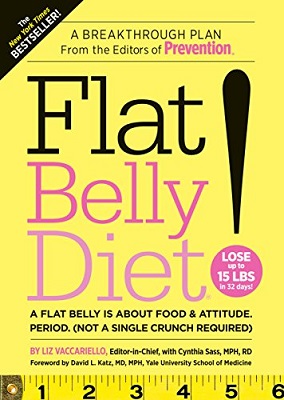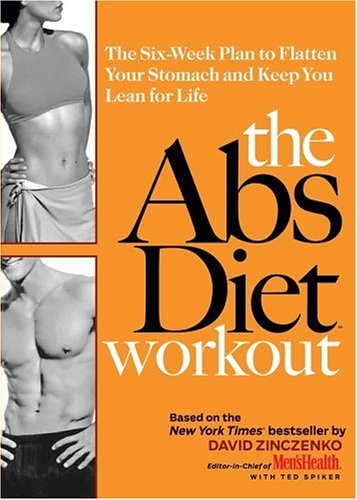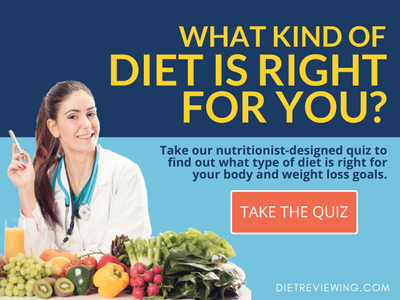
Jun 29, 2019 | Natural Diets
The Paleo Diet – also known as the Paleolithic Diet, the Stone Age Diet, the Caveman Diet or the Hunter-Gatherer Diet – was created to provide a lifestyle strategy to overcome illness associated with the way we live our modern lives.
Who Created the Paleo Diet?
That said, since it was first created, it has become better known as a highly popular weight loss plan. It is based on a method that restricts or even eliminates certain food types and individual foods. It has been followed by certain top celebrities from Matthew McConaughey to Megan Fox and Ray Mears.
Still, just because a diet is popular, it doesn’t mean that it is necessarily effective or that it is appropriate for everyone even if it can be effective.
Therefore, it’s always a good idea to take a closer look at any diet, including this one, and to speak with your doctor before making any major changes to what you eat or how you prepare it.
What is the Paleolithic Diet?
To follow the Paleo Diet, you will need to start focusing on foods that may have been the top choices of our Paleolithic ancestors around a thousand years ago. According to the creators of this diet, this was a time before agriculture. Therefore, our ancestors from that time ate essentially anything they could hunt or gather.
Some of the foods they ate included:
- Meat,
- Fish,
- Fruit,
- Vegetables,
- Nuts, and
- Roots.
On the other hand, the foods you will not be consuming on the Paleo Diet include:
- Grains,
- Legumes,
- Dairy,
- Processed oils,
- Refined sugar, and
- Salt
The reason those foods aren’t permitted on the Paleo Diet is because the creators of the diet believed that those became available only after agriculture became a part of the average human life.
Watching Your Macros
In terms of macronutrient balance, Paleo encourages a low carbohydrate and high protein eating strategy. It does not have any specific recommendation for calorie counting and makes no mention regarding the type of exercise that should be followed.
In terms of its macronutrient balance, Paleolithic dieting can reflect many other lower carb and high protein diets. What makes it unique is the justification for balancing the macros this way. The claim is that the foods are selected because they are what the body evolved to process first. It’s what the body naturally digests the best as opposed to being forced to cope with it.
Paleo Controversy
As popular as this diet may be, it is also quite controversial. The idea behind it is that by choosing the options our ancestors ate, we are more likely to opt for foods that the body is actually prepared to properly digest and use. The hunter-gatherer body could digest precisely what Paleolithic people could find on the land around them. That didn’t include chips, fries or cakes.
The claim is that by living this way, we can become more fit and healthy and can reduce the risk of degenerative disease, certain cancers, arthritis and heart disease. The belief is that many of those conditions came about as a result of more modern lifestyles following the development of agriculture. Moreover, the idea is that if a Paleolithic person died young, it wasn’t because of disease – particularly chronic illness – but was rather because of having to live in a harsh environment where accidents were commonplace.
Furthermore, in recent years, a large and growing body of evidence has shown that the Palaeolithic people did not eat in the way the creators of this diet claimed. Instead, they did eat grains. Substantial evidence revealed that oats and many more grains were a regular part of our ancestors’ diets.
Caveman Diet Drawbacks
That said, this more “natural” way of living does have certain drawbacks, such as being low on soluble fiber consumption and can risk an inadequate intake of antioxidant vitamins (such as A, E and C), phytochemicals, monosaturated fats and omega-3 fatty acids, and many other low-glycemic index carbohydrates. Weight can indeed be lost on this diet, but it remains rare for a dieter to keep it up over the very long term, leading to potential nutrition, metabolism and weight issues.

Jun 19, 2019 | Low Glycemic Diets, Macronutrient Diets, Natural Diets
The Flat Belly Diet is an eating strategy designed to help people lose weight effectively. It was created by Prevention magazine editors. This diet promises to make weight loss fast and easy, especially when it comes to fat stored around the middle. This is supposed to occur in about one month.
What is the Flat Belly Diet Supposed to Do
The diet’s creators say that the Flat Belly Diet lets dieters change the way they eat to drop the pounds. In fact, exercise isn’t a requirement of this plan. That said, the creators of the diet do underscore that if you do exercise, it can help to boost results from the other efforts made throughout the month.
Two Diet Phases
There are two phases to the Flat Belly Diet. The first is four days long and is meant to help combat bloating. It uses specific drinks and foods to help followers to overcome bloating. That way, the dieter won’t be carrying extra size that doesn’t need to be there and that isn’t even caused by body fat.
The second phase is a four-week eating plan that affords dieters a set number of calories. Women eat about 1,600 calories per day. Men follow a similar plan but with a higher number of daily calories allowed.
Monounsaturated Fatty Acids
The Flat Belly Diet places the emphasis on eating foods high in monounsaturated fatty acids (MUFAs). Dieters must also eat lots of whole grains, fruits and veggies. Every meal must contain MUFAs. These foods include options such as seeds, nuts, avocados, olive oil and soybeans.
No Solid Research
Despite the fact that the Flat Belly Diet was created by well respected people, the diet itself hasn’t been uniquely successful in research. Large clinical trials haven’t shown that using this technique is any more effective than any other calorie-restricted strategy.
Though a dieter might lose weight using these methods, they’re likely because of the calorie limitations and because it encourages healthy and nutritious eating, according to the Mayo Clinic’s analysis. This indicates that the additional methods recommended by the diet aren’t necessarily promoting additional weight loss. Instead, it’s the methods that are the same as other calorie restricted healthy diets that are helping these dieters to drop the pounds.
Though it advertises itself as a type of quick fix, it isn’t really all that different from following other traditional calorie-based diets with a focus on nutrition.

Apr 29, 2019 | Natural Diets
A CBD oil weight loss diet has become quite the popular strategy over the last few years, and it is only expected to continue taking off. That said, is it just a popular strategy or is there something to it? Has science supported the use of this technique?
The CBD oil weight loss diet was somewhat to be expected as this substance is being used for an increasing range of reasons from joint care to skin care, anxiety, depression and pain control among many others. As so many people are turning to natural weight loss supplements in the hopes of overcoming weight struggles and obesity, many turned to CBD oil and this diet took off very quickly.
What is the CBD Oil Diet?
The CBD oil diet involves taking supplements – in liquid or capsule form – of CBD oil. CBD is the non-intoxicating active substance found in cannabis. Therefore, while many assume that because it is from the cannabis plant, it will have the same effects as marijuana when used as a drug, this is not the case.
That said, just because many people believe that CBD oil will provide them with a range of benefits, this doesn’t necessarily mean that weight loss is among them. Therefore, it’s important to look into recent research to see what it has indicated so far. The reason is that anecdotal evidence is not enough to show that something is safe or effective in helping people to drop the pounds.
CBD Oil Diet Scams Versus Genuine Products
To begin, it’s very important to recognize that despite what research says – positive or negative – there are some companies out there that have tried to jump on the CBD oil diet trend. Some have carefully made certain to provide quality products, while others are indeed scams making wild claims and offering products with little to no CBD oil. In the first place. There is, after all, a big difference between high quality ingredients and low quality versions extracted inefficiently, using cheaper methods that sacrifice the quality of the outcome.
If you do choose to follow a CBD oil diet, after consulting with your doctor, be sure you’re using a product with quality assured by a reputable third party organization. The pure substance is extracted from cannabis, hemp, by way of CO2 extraction and is guaranteed by reputable groups that verify quality and purity. Scam sellers, on the other hand, use ethanol and other solvents to extract low-grade oils. The result is a product with very little CBD and not enough for medicinal benefits.
The Research
All research into the CBD oil diet is preliminary, examining results in small groups of people. That said, so far, some research does indicate that there is potential with this substance and that it is worthy of further study to determine how much needs to be used, whether or not it is safe and if it is appropriate for use over time.

Apr 2, 2019 | Natural Diets
The Intentional Eating Diet essentially markets itself as being the anti-diet. Instead of counting carbs or calories, and instead of relying on shakes or bars, this strategy takes an entirely different perspective. It claims to allow people to get back to a far more natural relationship with their food – one that has been broken for quite some time.
The Intentional Eating Diet has been described in a number of books, such as “Intentional Eating: An Easy, Mindful Approach to Dietary Wellness for Increased Vitality, Weight Control, Chronic Disease Management and Stress Reduction”. That said, there are many versions of this strategy, which is mainly based on trying to live, and eat, with purpose and with presence.
What is the Premise of the Intentional Eating Diet?
To start, intentional eating usually goes hand-in-hand with living intentionally as a broader lifestyle. It means that you will place your focus on what is most important and what feels right for you. This gives you the opportunity to pay closer attention to your own feelings, instincts, sensations and inner wisdom.
With that information, you make choices that will satisfy your needs without overdoing it or leaving you in need of something important. This lifestyle keeps you present, acknowledging where you are, feeling your emotions and being aware of who you are and what you both need and want.
How to Practice Intentional Eating
The idea behind intentional eating is to choose the right foods to satisfy your body’s needs for nutrition and satisfaction. It skips your tendency to fall for clever marketing tricks that advertise that something is good for you. Instead, it lets you choose your foods with purpose.
Over time with the Intentional Eating Diet, you are supposed to become increasingly aware of your body’s signals and how to use your own wisdom to eat for your personal health, regardless of labeling, the latest studies, and product claims.
How to Start Eating Intentionally
In essence, the Intentional Eating Diet requires you to regularly ask yourself two main questions. The first question is whether the food (or drink) you’re considering will provide nourishment to your body, mind and emotions. This needs to be an honestly answered question for each food you select (or all the ingredients in a recipe, if you’re considering a whole meal or snack).
The second question has to do with whether your food or drink takes nourishment away from the planet. If you are harming the world while nourishing your body, then you are not completely nourishing your body. Intentional eating requires you to take a broader perspective about your nutrition.

Mar 22, 2019 | Natural Diets
The Plant Paradox is a book by Dr. Steven R. Gundry. It is based on the premise that some foods that are often thought to be nutritious and beneficial are actually bad for us. That includes beans, wheat, peanuts, legumes, tomatoes, peas and lentils, among others. The reason these foods are supposed to be bad for us is because they contain something called lectins.
What Are the Lectins Avoided by The Plant Paradox?
Lectins are a type of protein. They bond do carbohydrate molecules. According to The Plant Paradox, when lectins bond to cells, it is one of the leading causes of illness. In fact, the book states that people are actually “at war with plants” but that they must eat some plants because of the essential nutrients they contain, thus the paradox.
Because of this conflict, The Plant Paradox proceeds to recommend that people eat only certain precise foods in order to obtain the nutrients while taking in the lowest level of lectins. It discusses which foods should be avoided as well. Moreover, it also makes recommendations regarding how foods can be prepared in order to keep lectins low.
The Plant Paradox Pros
Many doctors have seen a positive side to The Plant Paradox. It contains many testimonials of individuals who claim to have felt better after having followed its instructions. Many people have enjoyed weight loss and a reduction in their intake of processed foods, foods that are high in sugar, and other ingredients conventionally believed to be less than helpful to a nutritious diet.
Regardless of the claims as to why The Plant Paradox is medically beneficial, it is low in calories, low in sugar and doesn’t involve eating any highly processed foods. Those are changes that could benefit most healthy adults.
The Plant Paradox Cons
While The Plant Paradox does have certain very healthful components, what has baffled many doctors is the lack of proven science behind many of its claims, particularly when it comes to lectins. Moreover, Dr. Gundry makes recommendations for spices – such as curcumin – in order to reduce inflammation. That said, it’s very important for dieters to speak to their doctors before taking these ingredients in the form of the recommended supplements as they are not necessarily appropriate for everyone and could be harmful to individuals with certain common medical conditions or who are taking other supplements or medications.
Dietitians have spoken out against this program in saying that it doesn’t necessarily offer the type of complete nutrition an average person needs. Moreover, it conflicts with the Dietary Guidelines for Americans. Its restrictive nature makes it unlikely that most people will follow it over the long-term or even beyond the first few weeks.

Feb 28, 2019 | Natural Diets
The Abs Diet is a strategy based on the concept that for every extra pound of muscle on your body, you’ll burn an additional 50 calories per day, even if you don’t do anything at all. Therefore, if you add an additional ten pounds of muscle to your body, you’ll naturally burn another 500 daily calories even if you take a day off and just watch movies the whole time.
In theory, based on the Abs Diet principles, if you had that additional 10 pounds of muscle on your body, you could naturally lose a pound of fat per week even if you didn’t diet. Of course, that would be dependent on your sticking to the same number of maintenance calories you would have eaten before you started gaining muscle.
How to Follow the Abs Diet
The entire point to the Abs Diet is to build more muscle by exercising regularly and eating the right foods. This way, your body is primed to burn fat more quickly so you can gain the results you want without having to eat less than you would if you wanted to maintain your weight instead of losing it.
The Abs Diet is a six week program in which you focus on eating 12 nutrient-dense power foods that will give you vitamins, minerals and fiber while supporting fat burning and muscle growth. You are also required to do a 20 minute workout three times per week.
What Do You Eat on the Abs Diet?
For the six weeks that you’re on the Abs Diet, you will eat six meals per day. These meals will consist of the 12 power foods. Those are beans and pulses, almonds and other forms of nuts, spinach and other types of green veggies, instant hot cereal, low-fat dairy products, turkey and other lean meats, eggs, olive oil, peanut butter, cereals and wholegrain breads, raspberries and other berries, and additional protein powder. No other foods are permitted during the six weeks.
How Much Weight Does the Abs Diet Help You Lose?
If the diet works as planned, it can be difficult for an individual to measure weight loss. The first two weeks usually bring more weight loss than the next two. That said, this doesn’t mean that more fat is being burned. The first couple of weeks provide a difference that is easier to measure in terms of overall weight loss. However, as muscle is built, it starts to increase weight. This can make it harder to register fat loss on the scale because muscle is being gained at the same time that fat is being burned.
Should You Try the Abs Diet?
This is an extreme form of fad dieting. The Abs Diet is a temporary strategy that doesn’t offer a long term lifestyle change that will allow you to maintain any results you achieve. Moreover, it also promises far more weight loss than is likely possible for the average person, particularly if it is claiming that the weight lost is in the form of body fat.






